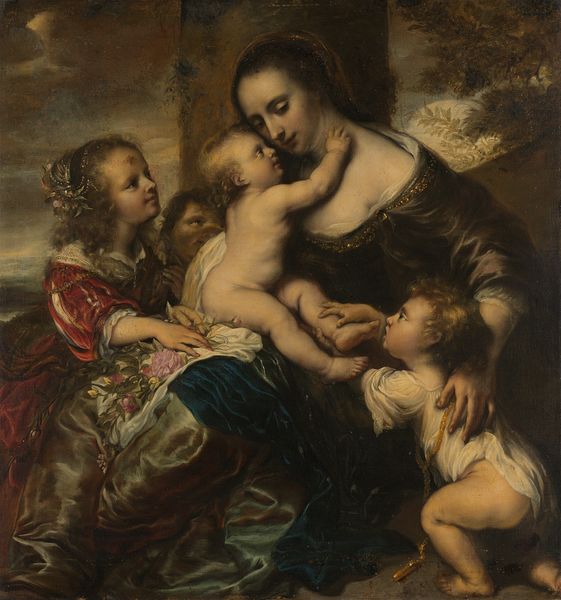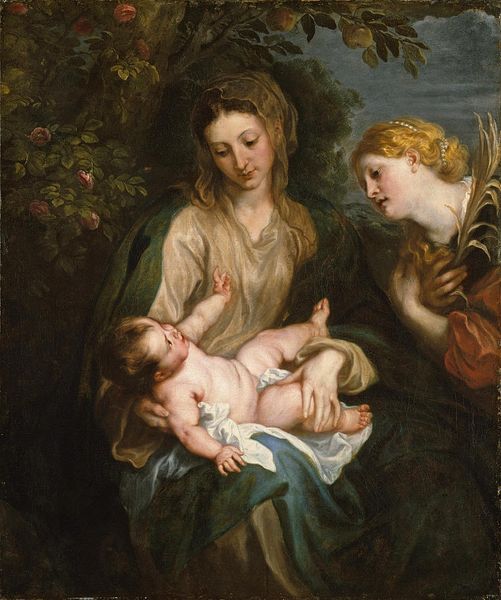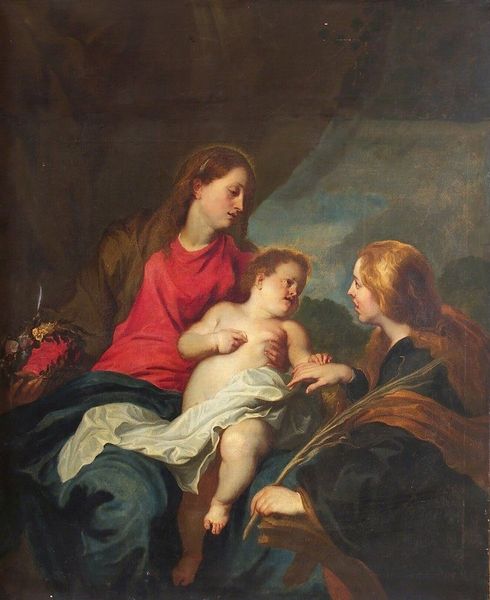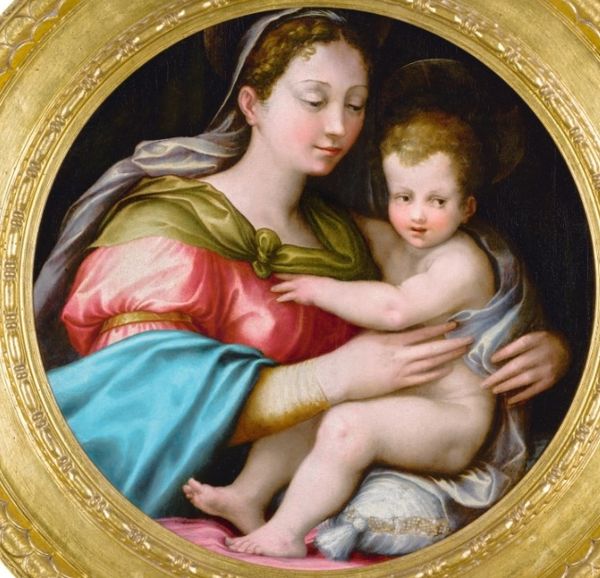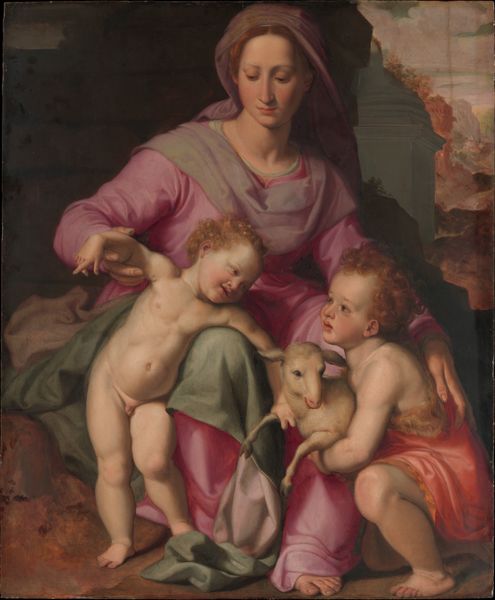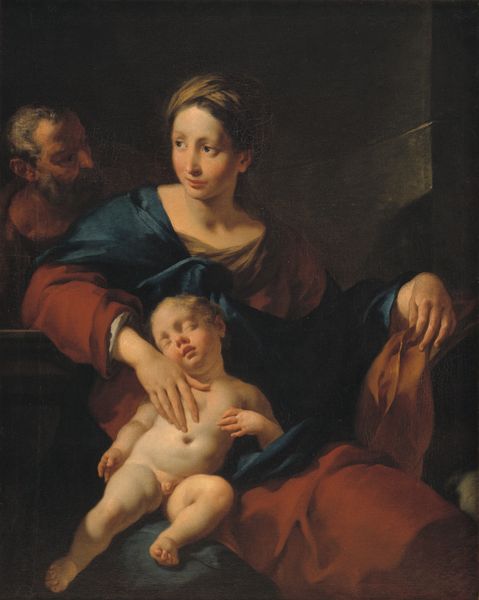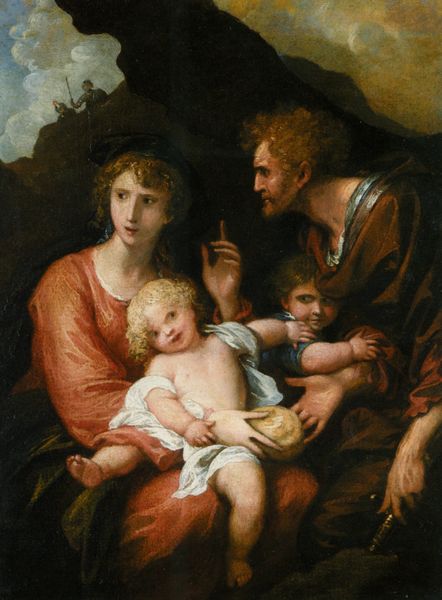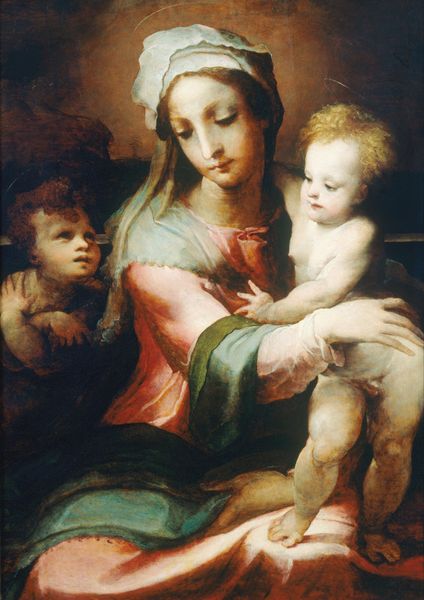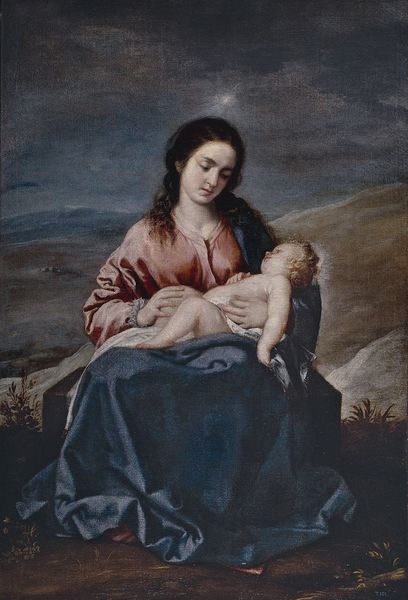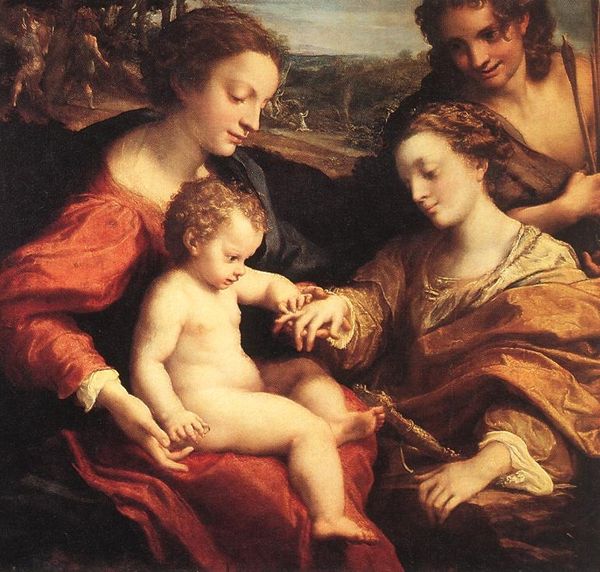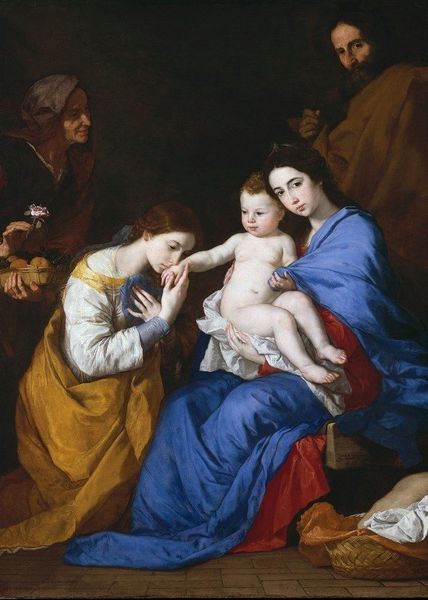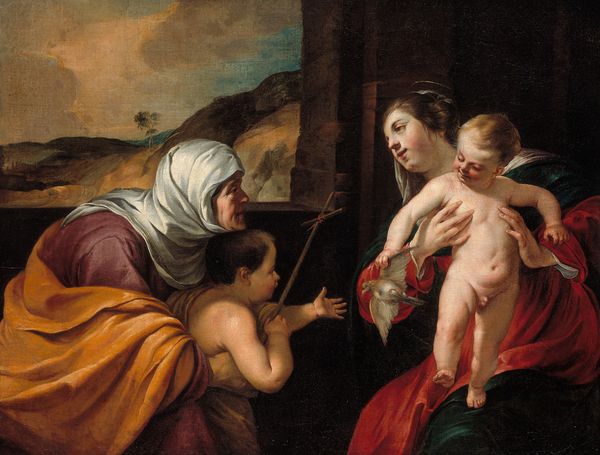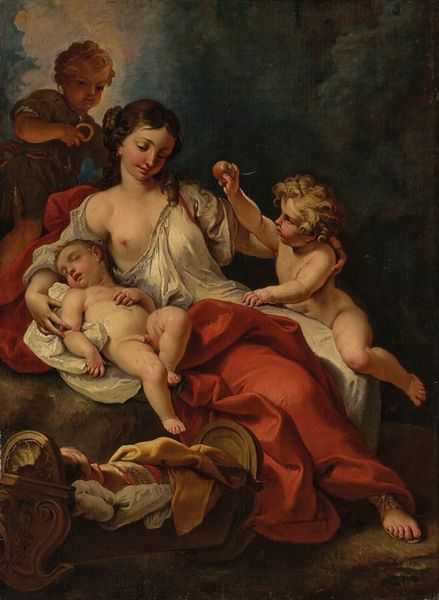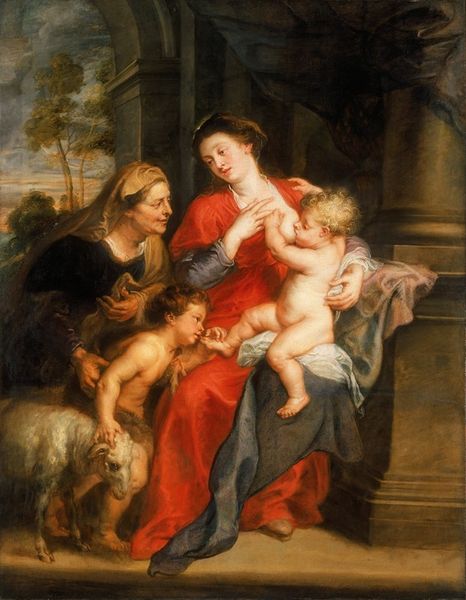
painting, oil-paint
#
portrait
#
baroque
#
painting
#
oil-paint
#
figuration
#
history-painting
Copyright: Public domain
Curator: Well, hello there! Looking at this canvas, I’m immediately struck by the kind of subdued drama. The light seems to linger on faces, inviting you in to whisper secrets with them. What about you? What's your take right off the bat? Editor: There's a formal grace about this. It's a fascinating intersection of religious iconography and, perhaps, social portraiture, reminding me that even faith is visualized through cultural lenses. This is Jan Cossiers’ "The Mystic Marriage of St. Catherine," created around 1624. It certainly adheres to Baroque sensibilities. Curator: Baroque it is! The emotion is definitely heightened, swirling with significance, even if it is still relatively serene. What pulls at my attention, really, is the baby Jesus offering a ring to Saint Catherine. Talk about symbolic vows! A ring probably made of…gold? Editor: Indeed. This concept, common in religious art, portrays Saint Catherine's spiritual marriage to Christ. And I'd wager that ring is more than simple gold. It signifies divine commitment, a promise. We can trace the iconography’s popularity alongside shifts in socio-religious ideals—specifically, this elevated idea of mystical union was appealing in Counter-Reformation Europe. Curator: Right! And seeing it represented with such lush color, heavy fabrics…I can almost smell the incense and beeswax candles. Does that richness also feed into the political and spiritual theater of the time? The canvas seems to act almost like a stage for devotion. Editor: Absolutely! It is visual propaganda. These weren't just artistic choices; they played a direct role in the complex dynamic between spiritual authority and everyday experience. Think about the ways visual culture reinforced social structures. Did everyone have the possibility to even access these works of arts? Curator: Interesting that it speaks to authority, when the feeling for me, somehow, leans more intimate than monumental. Perhaps it's because of the scale? Editor: Perhaps the close proximity of the figures creates that sense of closeness. The oil paint, used to portray all this information, does it convey something specific in you? Curator: Yes, oil allows the soft skin tones, it glows. I feel it breathes an air of immediacy and sacredness all in the same breath! So... seeing how artists reflect historical tension in such an emotional manner makes you feel there's nothing new under the sun, doesn’t it? Editor: It certainly reinforces the vital point that what appears novel always arises from somewhere else—making both art and history into a dialogue of innovation and legacy.
Comments
No comments
Be the first to comment and join the conversation on the ultimate creative platform.
